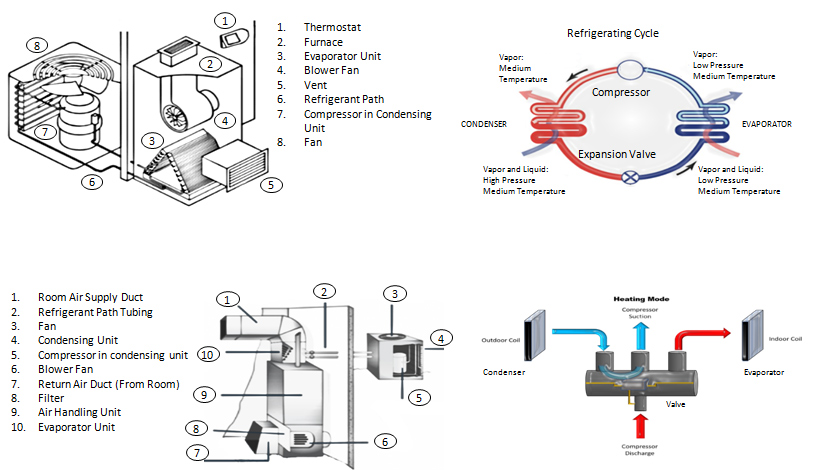A Brief Glance of HVAC Systems and Thermostats in Commercial and Residential Installations
In HVAC (Heat Ventilation and Air Conditioning) systems, several subsystems work together to bring a comfortable temperature to an area or a zone. HVAC system could be a conventional (normal) systems, a heat pump system or a combination of both systems. Most HVAC systems provide both cooling and heating. A thermostat is used to regulate temperature and to maintain air quality.
HVAC cooling system is based on compressor action. HVAC heating system can be based on electrical, gas, oil, water, and other sources or a mixed combination. Thermostats sense the temperature in a room and it turns on or turns off the sources of heating or cooling. Doing this allows the thermostat to take control of HVAC system components.
Most commercialized HVAC systems are fixed in place. These may composed of several stages of either or both cooling and heating The compressor can be found in the attic of a house, outside a residence or the rooftop of a building. The installation and location of an HVAC system depends on its type and prefer use of components.
Heaters:
Heaters provide warmth to a designated area or zone. Typical heating systems are boilers, furnaces and heat pumps. Some heaters are electric and use high resistance to provide warmth. Boilers and furnaces mostly rely on the burning of gas to release energy and provide heat. Heat Pumps pump heat by extracting it from outside sources and ventilating it to a designated area through the use of a compressor. Through a reversing valve, heat pumps may also create a reverse process to provide cool air with the use of the compressor. Depending on the system, the preset orientation of the valve and turning the compressor ON defines heat or cold.
Ventilation, Cooling and Air Conditioning:
Ventilation is the process of air change or exchange throughout different areas. It helps to determine air quality. An air handler unit (AHU) is used to control the air inside of a building. It connects to ducts to allow air flow and uses fan as air displacement.
In an air-conditioning system, cooling and humidity is controlled and provided through the removal of heat (in a refrigeration cycle or cooling cycle). Heat is absorbed from indoors and transferred outdoors, resulting in the cooling of a building.
The cycle is typically composed of 4 steps:
1. Beginning when the refrigerant in the system is in a gaseous state. The compressor pumps the refrigerant gas to a high pressure point and high temperature point.
2. The refrigerant enters a heat exchanger (a condensing coil or condenser) where it loses energy (heat). This energy is released to the outside.
3. The refrigerant cools, and condenses into its liquid state. An expansion valve (a metering device) regulates the refrigerant liquid to flow at a proper rate into to another heat exchanger (evaporating coil or evaporator) where it is allowed to evaporate.
4. The liquid refrigerant evaporates and absorbs energy (heat) from the inside air of the building, then returns to the compressor.
The following list and diagrams show some of the typical HVAC systems and sub-systems that currently exist.


